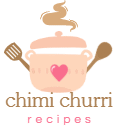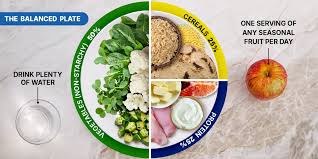High-Protein Meal Plan for Busy People: Simple, Effective, and Science-Backed
High-Protein Meal Plan for Busy People: Simple, Effective, and Science-Backed
Let’s be real—losing weight and building muscle can feel like an uphill battle, especially when you’re constantly hungry or not seeing the results you want. But what if there was a simple, science-backed solution to transform your efforts? Increasing your protein intake can help you burn fat, stay full longer, and build lean muscle, all without complicating your life.
The best part? You don’t need to spend hours meal prepping or resign yourself to eating plain chicken and broccoli every day. I’ve developed a high-protein meal plan that is not only easy and delicious but also flexible enough for any lifestyle. Whether your goal is to drop a few pounds, gain strength, or simply embrace a healthier way of eating, this plan makes it effortless.
Ready to make healthy eating simple and truly satisfying? Let’s dive in!

Why This High-Protein Meal Plan Is Perfect for You
This balanced, protein-packed meal plan is designed to keep you energized, satisfied, and on track with your health goals. Whether you’re focused on weight loss, muscle gain, or overall wellness, here’s why this plan delivers results:
- Keeps You Full & Fuels Muscle: High-protein meals effectively control hunger, reduce cravings, and help your body preserve precious muscle mass, even while losing weight.
- Boosts Metabolism & Fat Burn: Your body uses more energy to digest protein compared to fats and carbs, a process that naturally increases your calorie burn.
- Balanced & Nutritious: This isn’t just about protein. The plan includes plenty of fiber, healthy fats, and essential nutrients for your overall well-being.
- Diverse & Flexible: With a variety of vegetarian, plant-based, and lean meat options, you can easily tailor the plan to your dietary preferences.
- Easy & Meal-Prep Friendly: Save time without sacrificing flavor with quick one-pan meals, convenient wraps, and simple-to-assemble casseroles.
- Healthy Comfort Foods: Enjoy satisfying favorites like lasagna, grilled cheese, and sloppy joes—all reimagined to be protein-packed and guilt-free!
This 7-day high-protein guide makes healthy eating simple and effective. Are you ready to feel the difference?
New Scientific Research on High-Protein Diets

Here’s something exciting that is set to change the game. Orford University is currently conducting a groundbreaking study on next-level WW meal plans and their incredible impact on weight loss.
Their research is centered on a revolutionary approach: eliminating the need to track certain foods. The concept is as simple as it is powerful—when people aren’t burdened with logging every single item they eat, they are far more likely to stick with a healthy diet for the long haul.
The early findings are nothing short of impressive:
- Participants lost an average of 7.9% of their body weight in just six months.
- Over 60% of them lost at least 5% of their starting weight—a significant milestone for improving health.
- More than 30% successfully dropped over 10% of their body weight, a truly transformative achievement.
This research could reshape the future of weight loss programs, making healthy eating more intuitive, stress-free, and effective than ever before.
Celebrities Who Swear by High-Protein Meal Plans
It’s not just a trend; it’s a lifestyle embraced by many celebrities to elevate their health, fitness, and overall vitality. Here are a few stars who champion a high-protein diet:
Jennifer Garner
The acclaimed actress seamlessly incorporates high-protein meals into her busy daily routine. She stays energized with protein-packed favorites like egg bites, roasted chicken, and turkey burritos. Garner advocates for enjoying food without guilt, ensuring her meals are rich in both vegetables and quality protein.

Cody Rigsby
The famous Peloton instructor highlights the importance of a high-protein diet to stay fit and strong as he ages. Rigsby attributes his powerful physique to a combination of physical activity and smart nutrition, with a special focus on protein. His diet features staples like egg whites, steak, chicken, and salmon. He advises building meals around a protein source to curb cravings and stay full.
Tiffani Thiessen
At 51, actress and cookbook author Tiffani Thiessen has shifted her focus from just looking good to feeling great. Embracing a balanced and sustainable approach to wellness, Thiessen has increased the protein in her diet while enjoying fun activities like hiking and pickleball. She emphasizes that true wellness is a blend of physical and mental health.
How Much Protein Should You Eat Daily?
The ideal amount of protein depends on your weight, activity level, and personal goals, according to Harvard Medical School. A good rule of thumb is to aim for 0.8 grams of protein per kilogram of body weight (or 0.36 grams per pound). For a 150 lb (68 kg) person, that’s about 55 grams daily.
However, if you’re active or trying to build muscle, your needs will be higher. Consuming 20–25 grams of protein after a workout can significantly boost muscle repair and growth. Just remember that balance is key—research suggests that eating more than 40 grams of protein in a single meal doesn’t provide additional muscle-building benefits. The secret? Spread your protein intake evenly throughout the day for optimal results!
How to Follow a High-Protein Diet
Starting a high-protein diet can be a game-changer for your health. Here’s a simple guide to get it right:
- Plan Your Meals: Map out a weekly menu that centers on lean proteins like chicken, fish, tofu, and legumes to make healthy choices automatic.
- Choose Quality Over Quantity: Opt for high-quality, complete protein sources to ensure you get all the essential amino acids your body needs.
- Balance is Key: Pair your proteins with whole grains, colorful fruits, and plenty of vegetables to create well-rounded, nutritious meals.
- Monitor Your Intake: Use a food journal or a nutrition app to track your protein consumption and ensure you’re hitting your daily target.
- Stay Hydrated: Drinking plenty of water is crucial on a high-protein diet, as it aids digestion and supports healthy kidney function.
- Listen to Your Body: Pay close attention to your energy levels and how you feel. Don’t be afraid to adjust your protein intake to find what works best for you.
Latest Insight: Did you know that insect protein is emerging as a sustainable and highly nutritious alternative? Recent studies show it can support optimal bone growth and development, making it a promising and eco-friendly addition to high-protein diets.
By following these steps, you can successfully adopt a high-protein lifestyle that fuels your body and supports your long-term health goals.
Top High-Protein Foods to Add to Your Diet

Incorporating a variety of high-protein foods is key to building muscle, boosting your metabolism, and feeling your best. Here is a curated list of top-tier protein sources to add to your grocery list:
1. Lean Meats
- Chicken Breast: A powerhouse of protein, a 100-gram serving provides approximately 22.5 grams of high-quality protein.
- Turkey: An 85-gram serving of cooked turkey breast offers a lean 25.6 grams of protein.
2. Fish and Seafood
- Salmon: A 178-gram fillet not only contains around 39.3 grams of protein but is also packed with heart-healthy omega-3 fatty acids.
- Tuna: A convenient pantry staple, one 107-gram can of tuna provides about 20.3 grams of protein.
3. Dairy Products
- Cottage Cheese: Low-fat cottage cheese is a versatile option, offering about 11 grams of protein per 100-gram serving.
- Greek Yogurt: This thick, creamy yogurt packs a serious protein punch, with approximately 10 grams per 100-gram serving.

